Akela: What’s the smallest building block of things?
Pack: Atoms. [We did a toy mockup of Rutherfords gold foil experiment last year]
Akela: Excellent… What about these complicated things: [points to table, and door], and this: [sniffs and points all-over the place] These are made of groups of Atoms. Do you know what we call groups of atoms?
(A little harder perhaps this time, but yes we have a winner!) Yellow sixer: “molecules!”
A: Brilliant! Molecules are groups of atoms stuck together to make bigger more complicated building blocks.
What about really complicated things: plants, animals, people, what would you say are the building blocks of these.
(Lots of tiny answers (even some subatomic particles), then really quietly our Yellow’s acting seconder says “Cells.”
A: Bingo! OK the building blocks of living things are Cells. What can we find in virtually all living cells?
Pack: [Lots of names of chemicals. I think we had water, salt, oxygen, and many others] then with a little reminder that we’re thinking about, living things, a chorus of “DNA”.
A: Well done! Now what’s DNA?
One of our cub’s hand rockets up, “DNS is an instruction book/a blueprint for [living things].”
Tick, vg, 10 points to blue six!” Cue discussions about hair, eye, skin colour, height and other traits.
This Tuesday just gone, we did an experiment to find and isolate some of our own DNA. We used things we might find at home to help us do this: A kind of cleaning-alcohol, pineapple juice, salt, water, dish soap. You can find a number of versions of this experiment online if you want to try for yourselves. Many recommend using 150 proof rum as the alcohol precipitant. Skip wasn’t so keen on using rum1 so, we used Isopropanol to precipitate the DNA. Oh and lots of spittle: our source of cheek cells.
More by luck than judgement this week’s meeting happened to fall 70 years, to the day, since the paper describing DNA structure (as we know it now) was published by Watson and Crick. And as Akela drives home from work before writing this blog post he hears the words “We wish to suggest a structure for the salt of deoxyribose nucleic acid (D.N.A.)”. Later on, while he’s cooking dinner he’ll ‘rewind’ replay the programme to discover what recently has been discovered about how Francis Crick, Rosalind Franklin and James Watson worked together on this scientific problem.
While we didn’t dip our toes into the world of x-ray crystallography, we did a couple of laboratory procedures that tick the boxes in the “Reactions” and “Living Things” sections of the Scientist Badge.
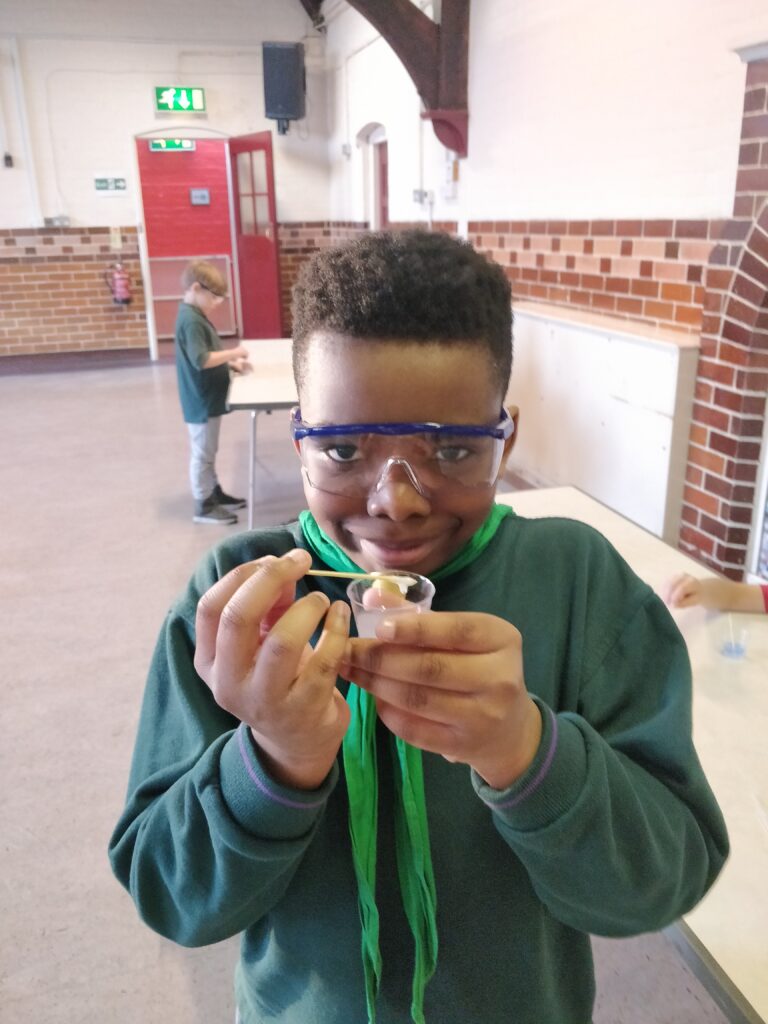
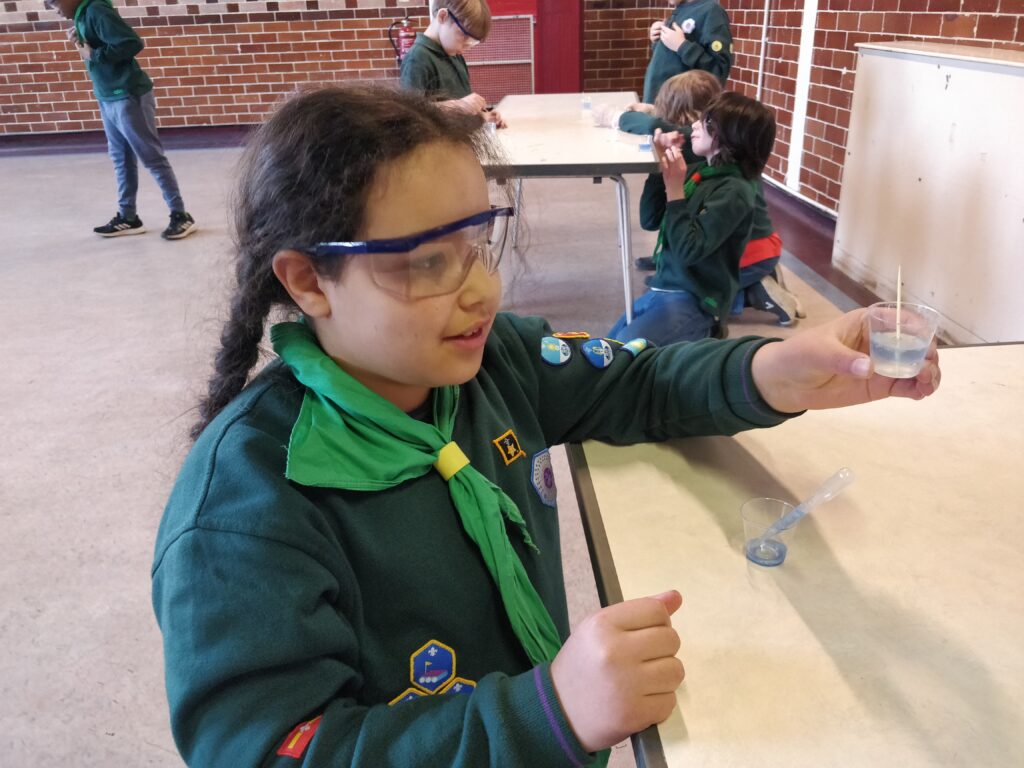
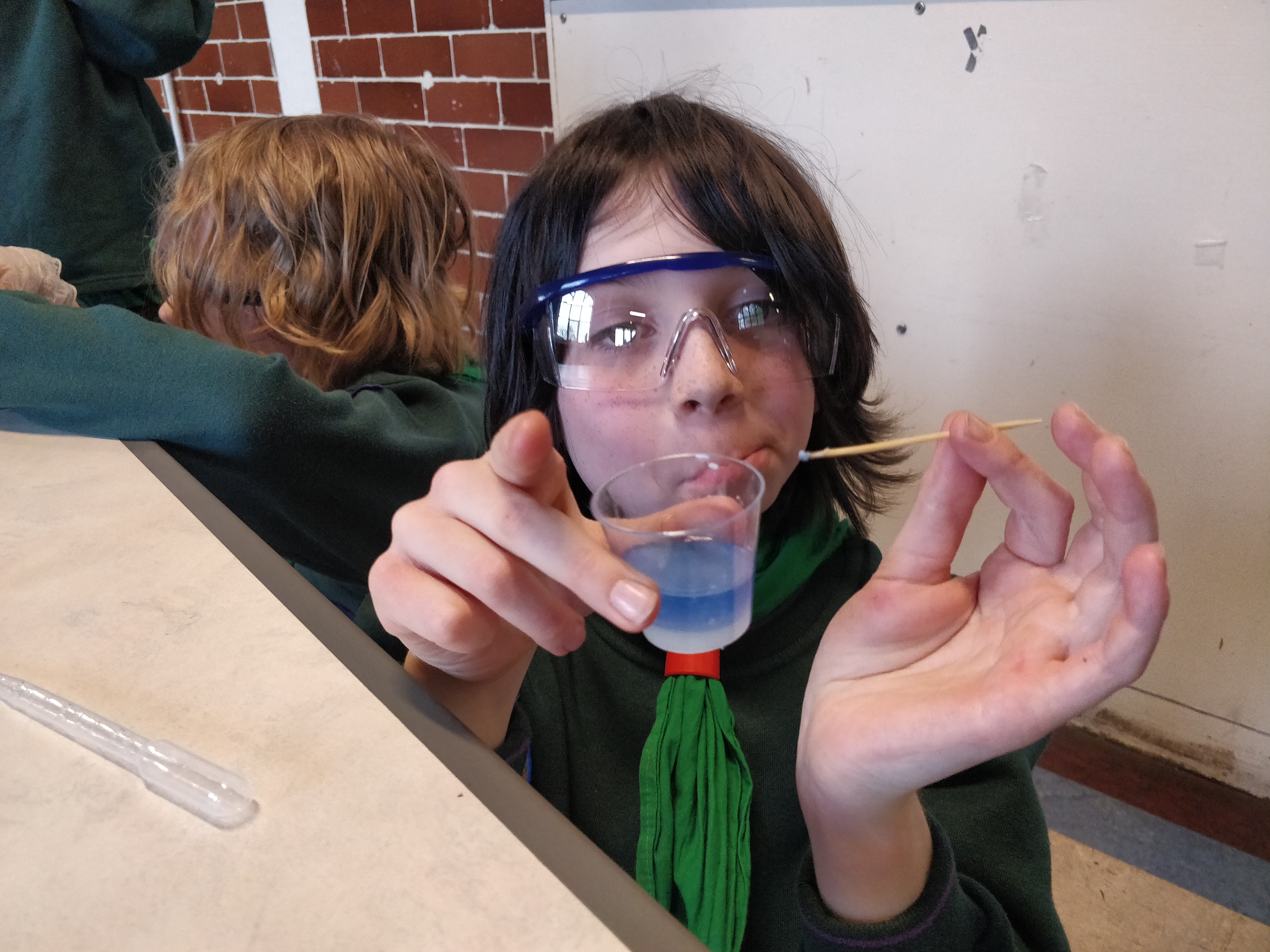
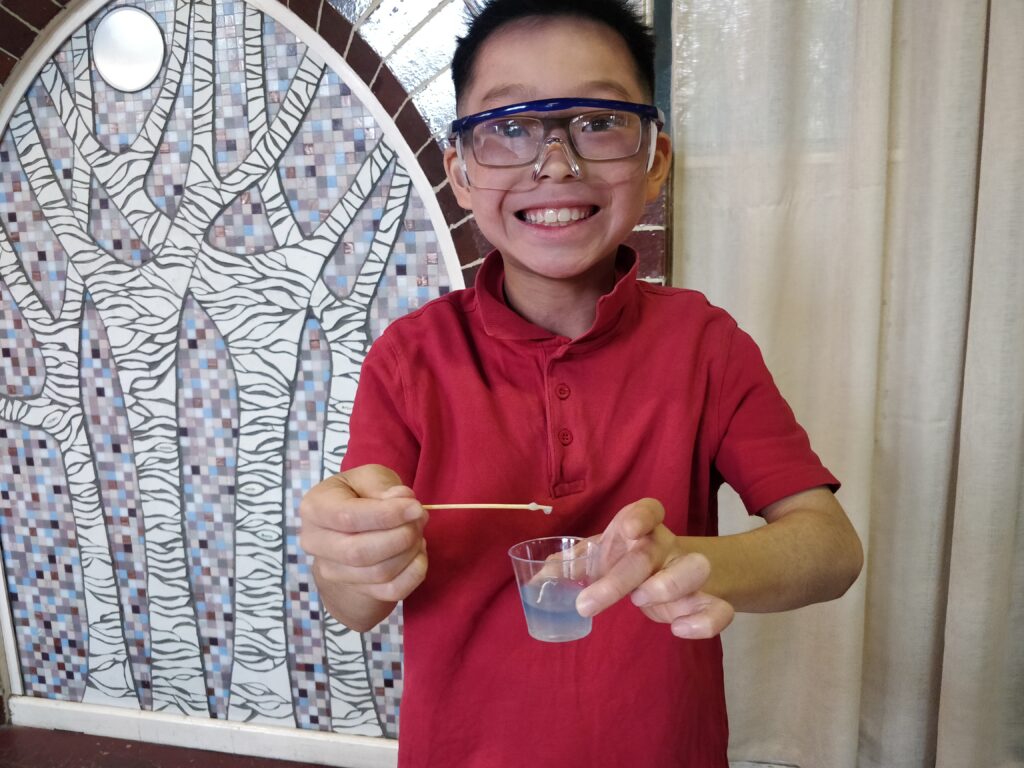
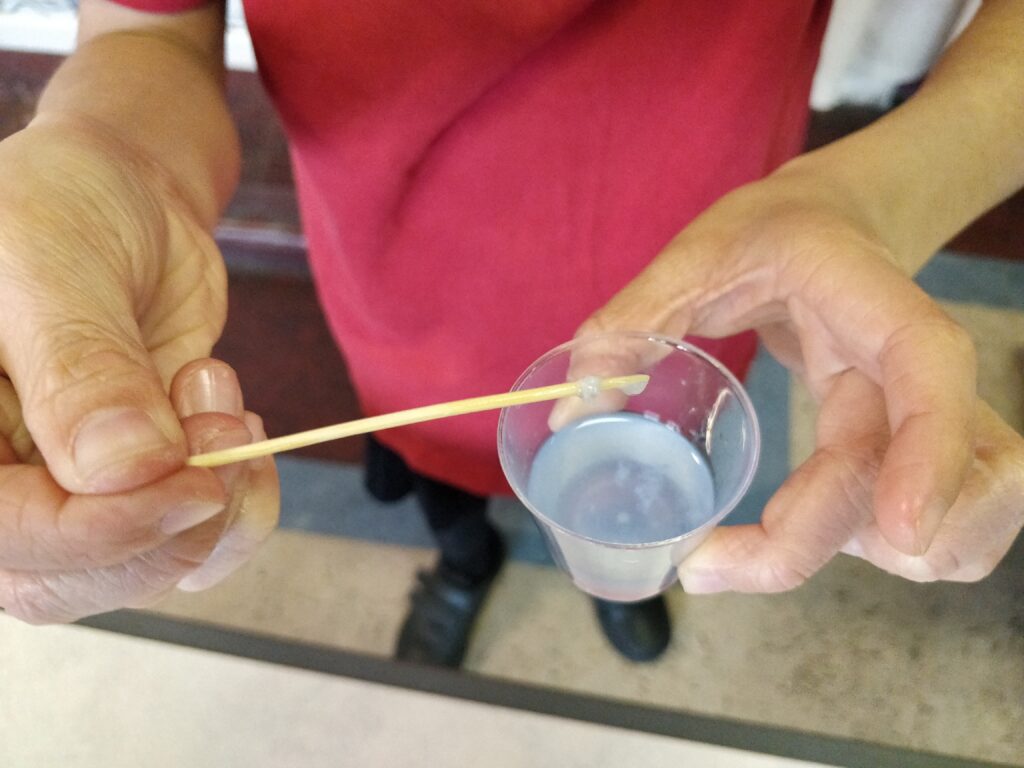
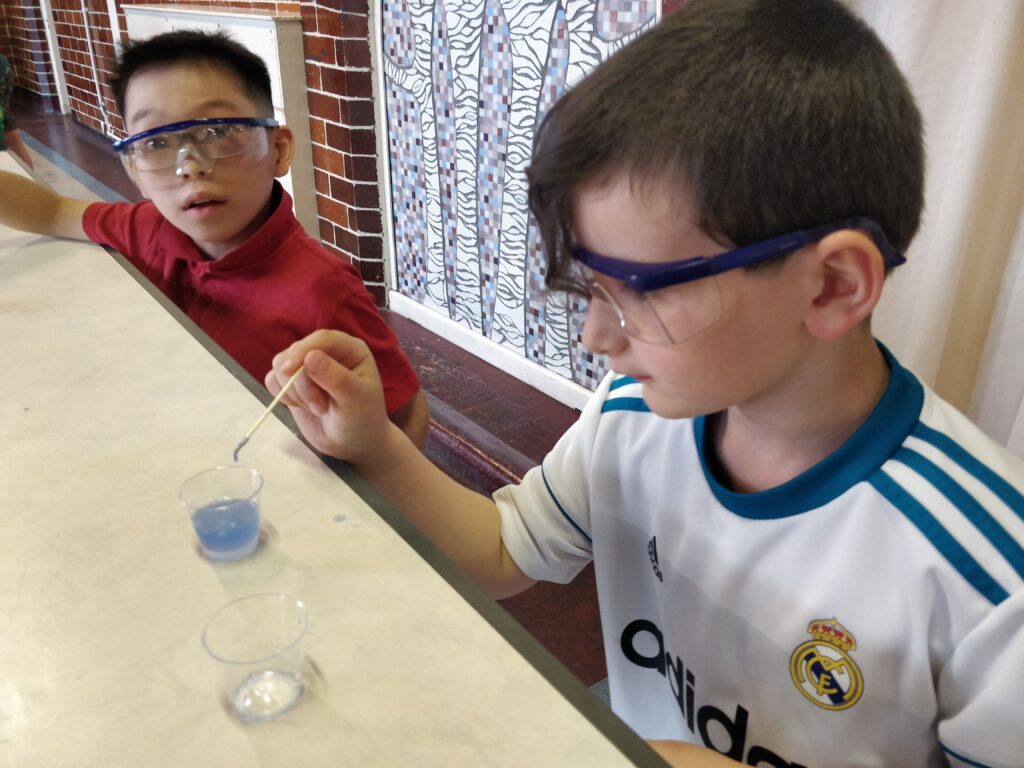
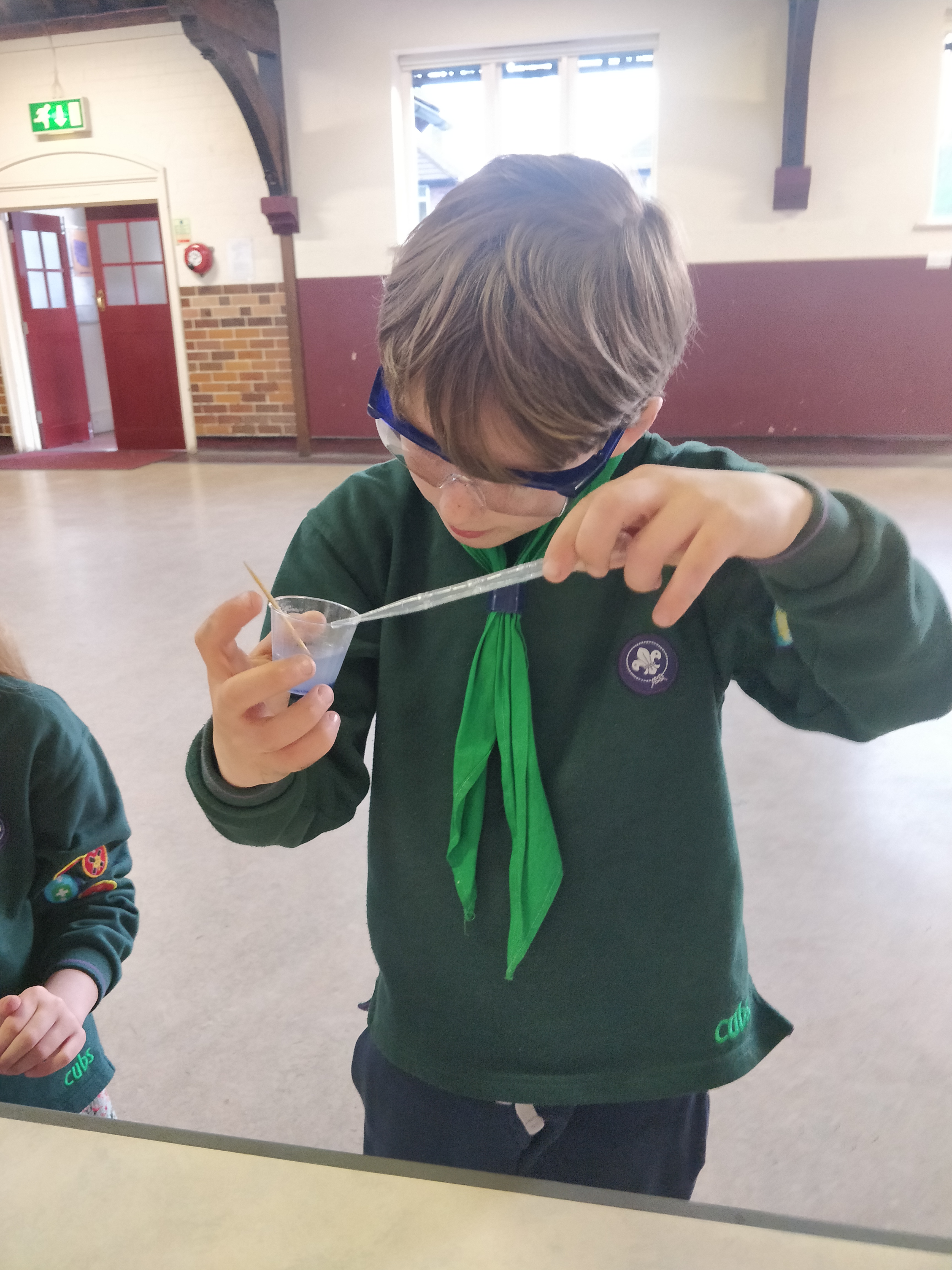
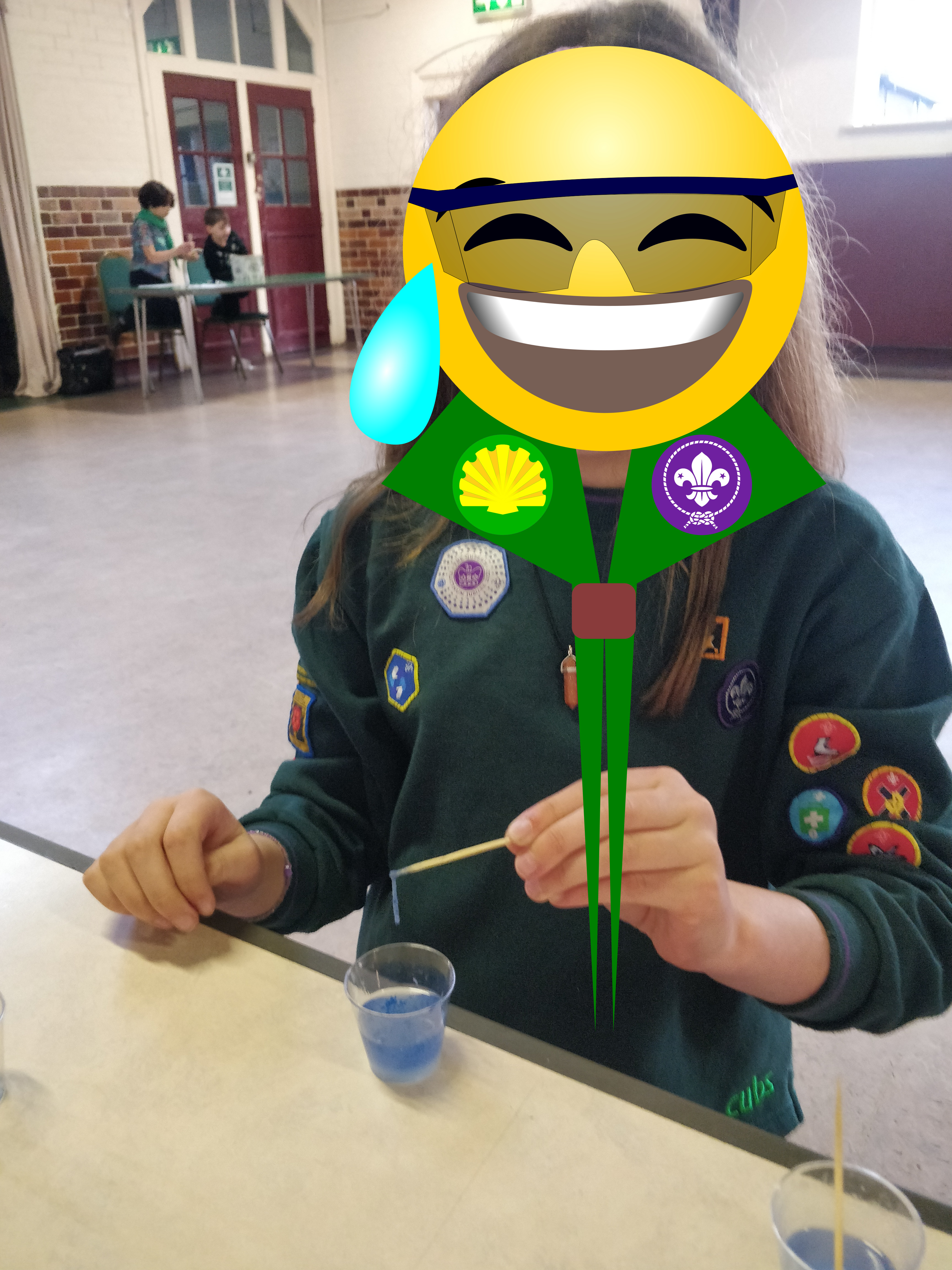
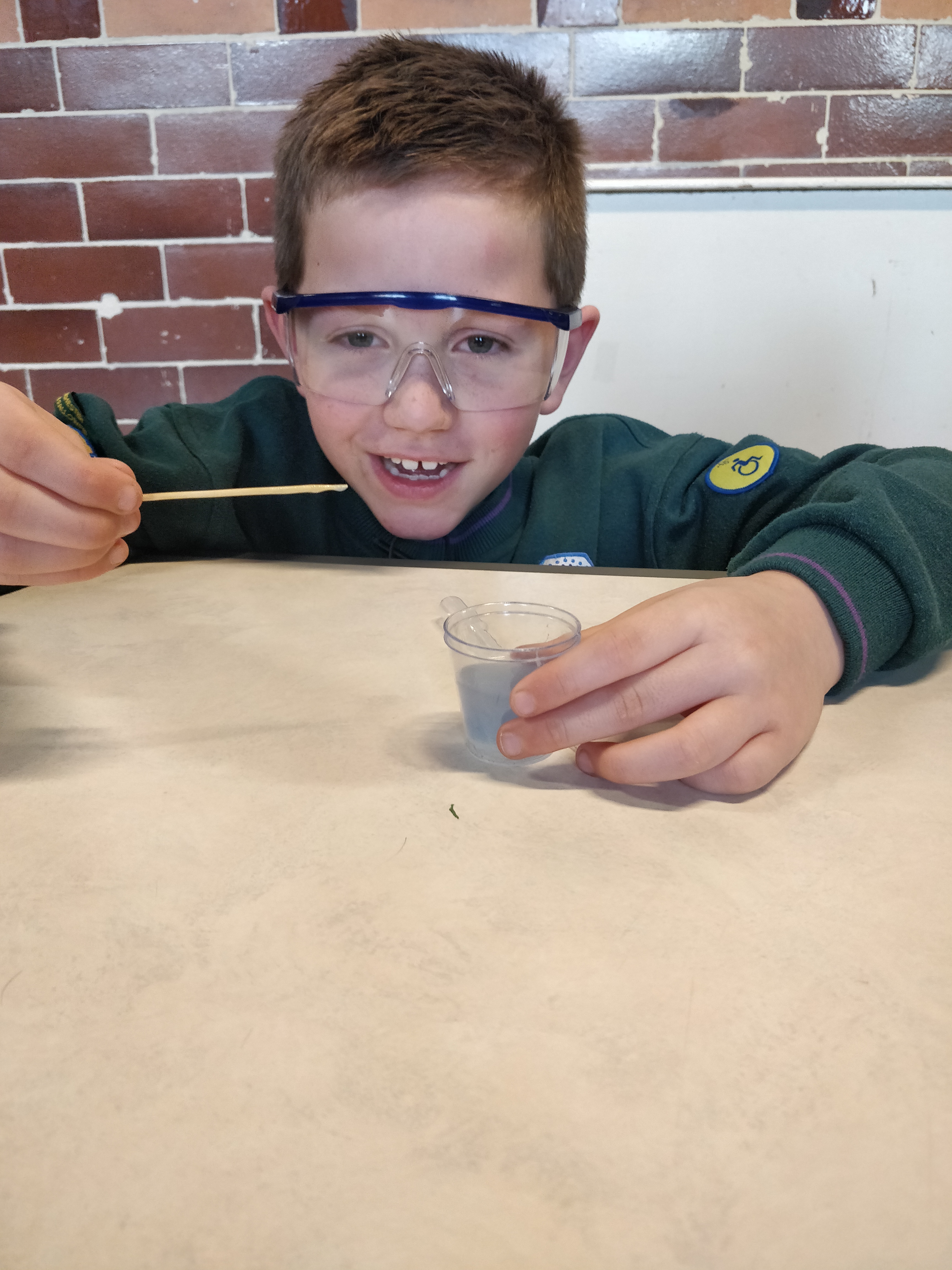

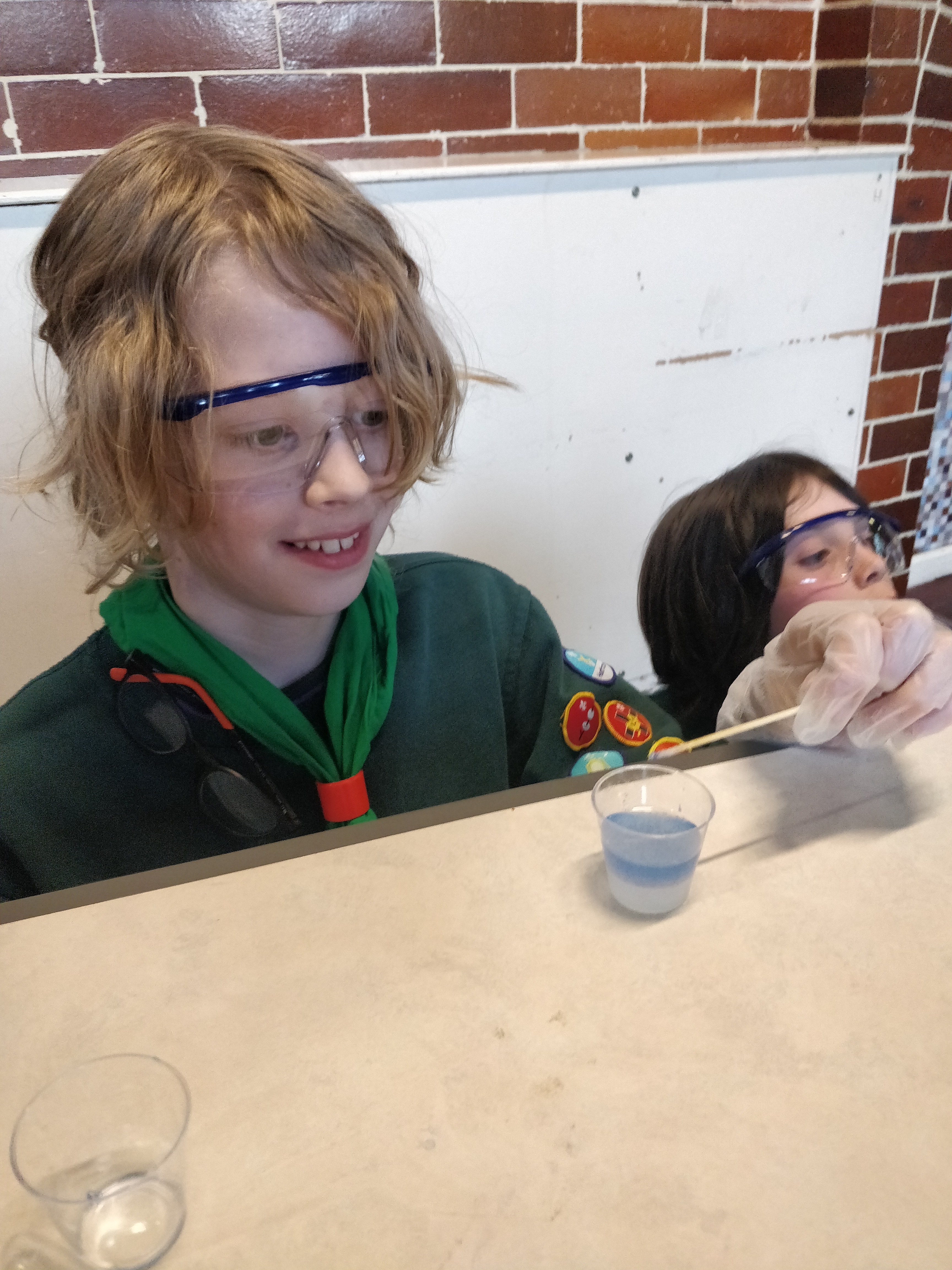
This experiment was the first part of an activity on DNA. We didn’t manage to get to talking about DNA’s double helix structure nor did we managed to find time to make our own edible sweet based DNA, because we had to finish a bit early to celebrate one of our Cubs achieving her Silver award. We’ll get back to the DNA sweet treats in a couple of weeks.
- Not sure whether this was for Green Card reasons or just that he couldn’t bear to see good quality rum used for such frivolous gloopy gunky science experiments.












